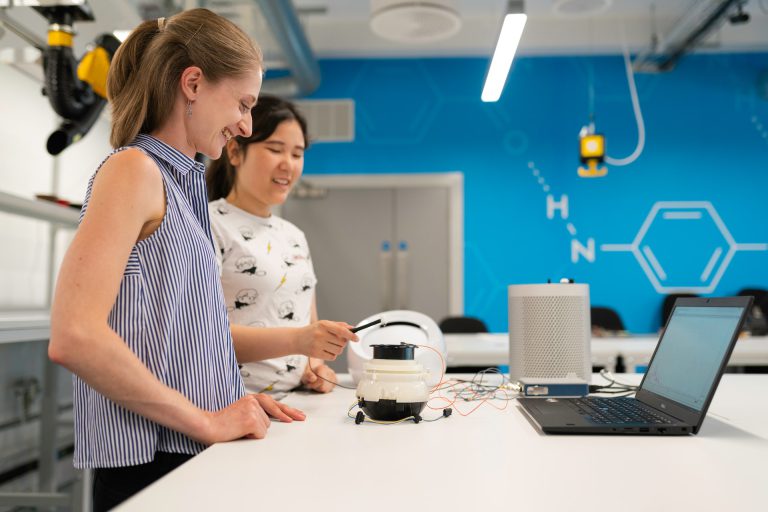A major challenge for e-literacy: the gender digital divide
8 March, 2022 Photo by Julia M Cameron on Pexels
Photo by Julia M Cameron on PexelsAlthough the digital transformation of society has social and economic implications for the majority of the world’s population, it has a particular effect on women.
With an increasing number of countries undergoing their fourth Industrial Revolution (with some people already talking about a fifth), the gender divide is a major challenge for governments around the world. According to official figures, women clearly face unequal opportunities. With this in mind, what sort of effect does a lack of access to new technologies have on women?
The statistics of the gender digital divide
Generally, one of the indicators to discover the statistics of the digital divide at an international level is internet access by children. According to a recent report issued by UNICEF and the International Telecommunication Union (ITU), two thirds of school-age children worldwide (1.3 billion boys and girls between the ages of 3 and 17) do not have any internet access at home (UNICEF & ITU, 2020). This circumstance makes it enormously difficult for children in some parts of the world, and especially for girls due to social and cultural reasons, to have regular access to ICT tools, for them to develop skills such as their digital identity and for them to become media literate.
While there are very few cases of this in North America and decreasing numbers in Commonwealth of Independent States (CIS) countries and in Europe (ITU, 2019), the gap is still large in developing countries and has particular implications in less-developed countries. In terms of internet users by gender, between 2013 and 2019, the divide has increased throughout the Arab States, Asia and the Pacific and Africa (ITU, 2019) and remains high in Latin America (Álvarez et al., 2020). In terms of internet usage, gender equality can be found in just over a quarter of all countries worldwide, while the proportion of women who use the internet is only higher than that of men in 8% of countries.
Most of the countries which present a large gender gap in terms of owning a mobile phone also present a large gap in terms of internet usage, since mobiles represent the most widely used device for accessing the internet (ITU, 2021). What we know about the gender digital divide for girls: A literature review by UNICEF includes the following data: the GSMA found that 393 million adult women in developing countries do not own mobile phones and, globally, women are 8% less likely to own a mobile phone than men. The gender gap in mobile phone ownership is much greater in South Asia (23%) and in sub-Saharan Africa (13%), where women are more likely than men to borrow or share mobile phones and rarely own a mobile device (UNICEF, 2021).
Implications of the gender digital divide
The importance of ICT ownership and knowledge lies in everything that comes from access to digitization and, therefore, everything from which people who cannot access it are excluded. The following classification by Van Dijk (2006) shows the benefits of digitization.
Technological opportunities:
- Intangible: opportunities to change one’s life or state of freedom.
- Tangible: capital (economic, social, cultural) and resources.
- Social: position, power, participation.
- Education: skills and abilities.
Without equal access to technology and the internet, and with less chance of acquiring digital knowledge, the playing field of our increasingly digitized society is not equal for girls and women. This affects their education and therefore greatly hinders their potential incorporation into the job market as well as the quality of the jobs themselves, an issue which in turn has a negative effect on a country’s potential for economic development and growth.
Global policies of action
International organizations are promoting measures to raise awareness in different countries. In UNESCO’s strategy for youth and adult literacy (2020-2025), aligned with the SDGs and the Education 2030 Agenda, a commitment was declared to support Member States in mainstreaming gender equality in the review and development of literacy policies, strategies and activities (UNESCO, 2019).
Moreover, the G20 ministers responsible for the Digital Economy in the “Digital Economy Ministerial Declaration: Shaping Digitalisation for an Interconnected World” highlighted the importance of overcoming the digital gender divide and surveyed member countries and some partners on national practices to review key policy areas and encourage the re-examination of digital strategies so that they incorporate the gender perspective (OECD, 2018).
It remains to be seen, however, which states will include good practices in their agendas outside of supranational powers, how countries with more prosperous economies will support initiatives to help those in the developing world, and which policies and measures will benefit NGOs and private initiatives.
Reducing the size of the divide
The digital divide has many obstacles to overcome and not all of them are clear. The first of these relates to education in schools, since this is where children learn to read and write, as well as acquiring their computer literacy through direct contact with digital tools. Against this background, we should consider how children and young people have been affected by the interruption of classes during the lockdown and, as a consequence, how not having access to the internet or digital media through which to continue their learning process affected them.
From courses offered by public bodies to recycling or donating computer equipment and encouraging girls and women to train in ICT skills, any effort made by private and public initiatives is another step towards digital literacy equality. Nonetheless, the importance of state policies is paramount.
There is one issue, though, which will continue to threaten the size of the divide: digital transformation is advancing quicker than social changes or international policies, meaning that it is incredibly important to raise awareness among the general population and promote initiatives for direct action through all layers of society.
This article is part of the UOC’s commitment to achieving United Nations Sustainable Development Goal (SDG) 4, Quality Education.
References
Álvarez, H.; Arias, E.; Bergamaschi, A.; López, A.; Noli, A.; Ortiz, M.; Pérez, M.; Rieble-Aubourg, S.; Camila, M.; Scannone, R.; Vásquez, M.; Viteri, A. (2020). La educación en tiempos del coronavirus. Los sistemas educativos de América Latina y el Caribe ante COVID-19. Inter-American Development Bank. Available at: https://publications.iadb.org/publications/spanish/document/La-educacion-en-tiempos-del-coronavirus-Los-sistemas-educativos-de-America-Latina-y-el-Caribe-ante-COVID-19.pdf
Instituto Nacional de Estadística (INE). (2020). Encuesta sobre Equipamiento y Uso de Tecnologías de Información y Comunicación en los Hogares Año 2020. Available at: https://www.ine.es/prensa/tich_2020.pdf
Intel (2013). Women and the Web. Available at: https://www.intel.la/content/dam/www/public/us/en/documents/pdf/women-and-the-web.pdf
ITU. (2019). Facts and figures 2019. Measuring digital development. Available at: https://itu.foleon.com/itu/measuring-digital-development/gender-gap/
ITU (2021). Bridging the gender divide. Available at: https://www.itu.int/en/mediacentre/backgrounders/Pages/bridging-the-gender-divide.aspx#:~:text=According%20to%20ITU’s%20latest%20data,stands%20at%2012.5%20per%20cent.
Liu, J. (9 September 2021). Women, in search of jobs and higher pay, are turning to online certifications. CNBC Make it. Taken from: https://www.cnbc.com/2021/09/09/womens-enrollment-in-online-courses-certificates-rises-during-pandemic.html
OECD (2018). Bridging the digital gender divide. Include, upskill, innovate. Available at: https://www.oecd.org/digital/bridging-the-digital-gender-divide.pdf
Plan International (2022). Bridging the gender digital divide. Available at: https://plan-international.org/education/bridging-the-digital-divide
UNESCO (2019). UNESCO strategy for youth and adult literacy (2020-2025). General Conference, 40th. Available at: https://unesdoc.unesco.org/ark:/48223/pf0000371411
UNICEF & ITU (2020). How many children and young people have internet access at home? Estimating digital connectivity during the COVID-19 pandemic. Available at: https://www.unicef.org/media/88381/file/How-many-children-and-young-people-have-internet-access-at-home-2020.pdf
UNICEF (2021). What we know about the gender digital divide for girls: A literature review. Available at: https://www.unicef.org/eap/media/8311/file/What%20we%20know%20about%20the%20gender%20digital%20divide%20for%20girls:%20A%20literature%20review.pdf
Van Dijk, Jan A.G.M. (2006). “Digital Divide Research, Achievements and Shortcomings”. Poetics. 34. 10.1016/j.poetic.2006.05.004. Available at: https://www.researchgate.net/publication/241880596_Digital_Divide_Research_Achievements_and_Shortcomings






